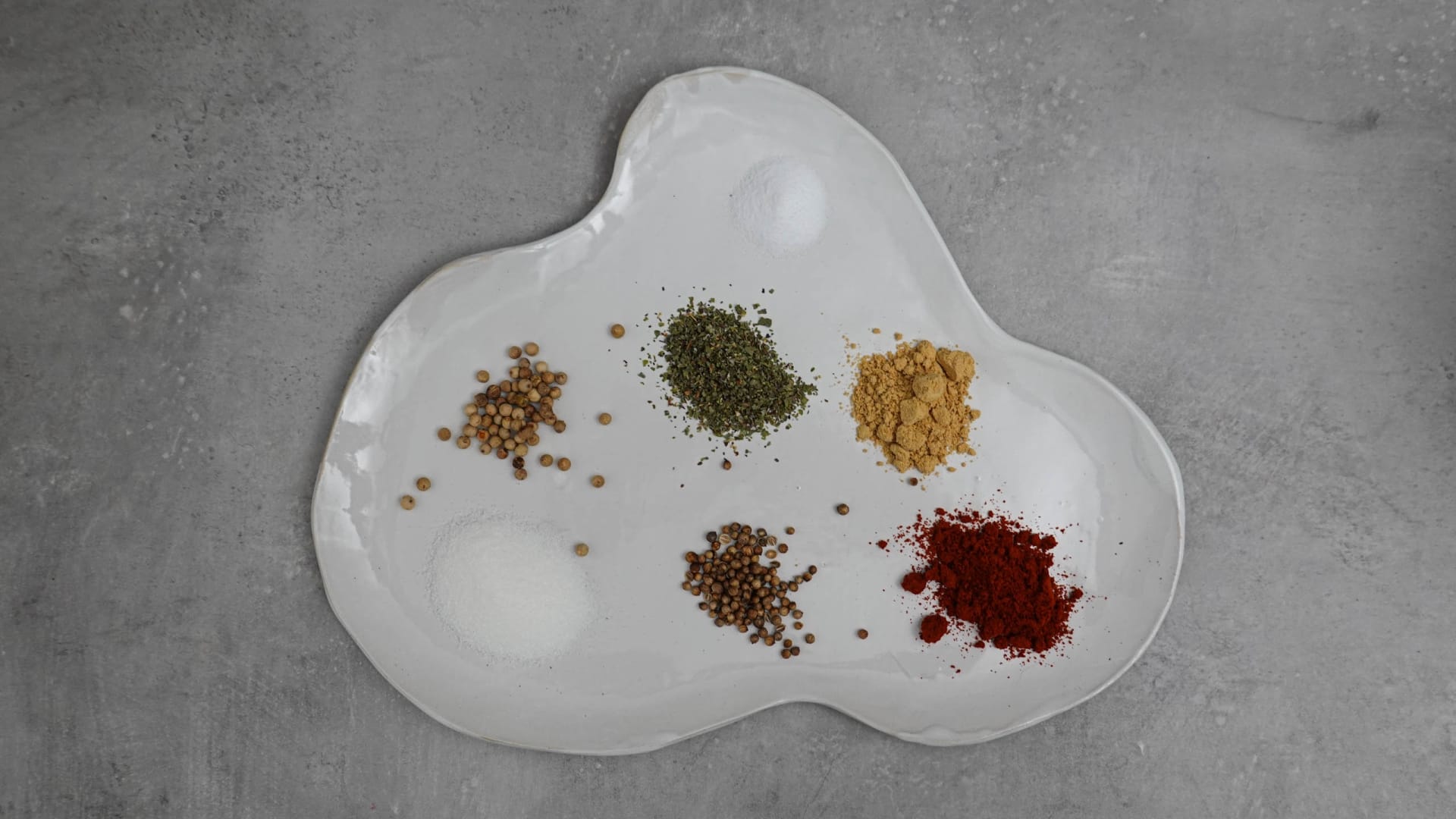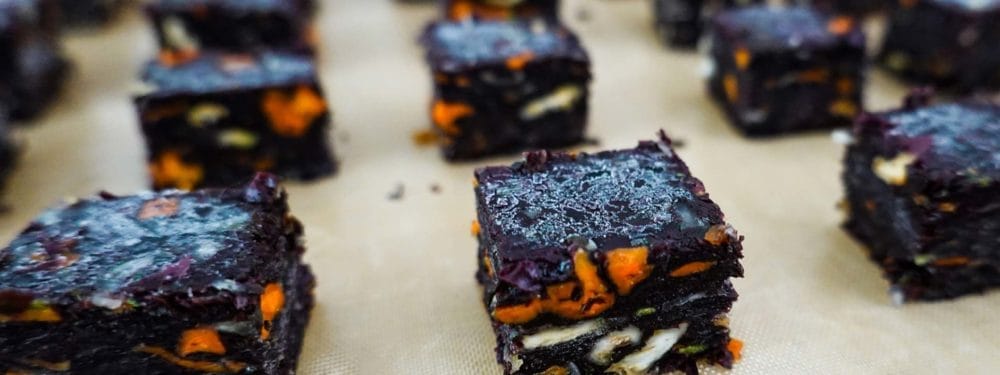Small experiments with sausage
Vegetables are our meat but still this time we venture into the meat of animals. So far we have been more dedicated to substitute products, now we are doing a mixed product. Not vegetables, not sausage, but vegetable sausage, or rather vegetable sausage 2, because we have recently produced a first variant in the form of vegetable charcuterie matured with koji. So it’s all about the vegetables – in the sausage.

Sausage Policy
A famous German ersatz sausage inventor, is even more famous for saying “No experiments”. In fact, Konrad Adenauer filed a patent for a soy sausage. A substitute product to ensure the supply of the population in the post-war years (after the First World War). We continue to experiment despite warnings, because the successor generations know: “What matters is what comes out the back.”
Sausage is also a perfect match for Helmut Kohl’s achievements, because sausage unifies a wide variety of ingredients into a homogeneous, flavorful mass. However, we are aware that sausage does not only stand for peaceful unity.
After all, it is called:
“Laws are like sausages, you better not be there when they are made”
This is wrongly attributed to Bismarck, but it appears in a similar way in the work of the French gastrosopher Alexandre Grimod de la Reynière.
However, we want to know exactly what goes into the sausage and it is important to us to treat meat respectfully and to buy from specialist sausage sellers whom we trust. Sausage is obviously an important cultural product that helps define art, design and politics . We are therefore all the more pleased to be involved in shaping it.
50:50 Sausage
We try to meet the trend of decreasing meat consumption and transfer the basic attitude of the growing group of flexitarians into a sausage. It consists of 50% meat and 50% vegetables in a very flexitarian way. For all those who can not or do not want to decide or just need a transitional product. Such a sausage concept has made it as Responsible Meat has already attracted scientific attention and won an award as a design concept . More about this also with us.
The combination itself is not exactly new, paprika-lyoner is a sausage classic, but here the vegetable content is manageable. Pinkel or Grützwurst, which is “stretched” with barley or oat groats and is thus also a flexitarian among the sausages, would be more of an example.

So we combine a classic lyoner or meat sausage (a boiled sausage) with vegetables and make a vegetable lyoner in different variations.
- Beet celery sausage
- Carrots sausage
- Broccoli sausage
By the way, unlike milk, sausage may be called sausage with or without animal parts.
For both meat and vegetables, we prefer regional products and follow principles such as nose to tail or leaf to root. We purchase the meat from a regional butcher. After a short consultation we buy pork neck, pork bacon and beef shoulder. At the market we also buy our vegetables for the sausage: beet, carrots, celery and broccoli.
The vegetable sausage makers

Arriving at the Food Lab, we first prepare our vegetables. We clean the beet and celery with a soft vegetable brush, remove the stems and roots and cook the beet and celery in the oven at 180 degrees for one hour. This reduces the moisture and concentrates the flavor. The carrots, on the other hand, we blanch briefly, so they remain crunchy and retain a bright color. Clean the broccoli into florets and set aside. For the sausage mixture, we parry the pieces of meat and cut them into 2×2 cm cubes. We let the cubes freeze at -18 degrees, this is important because heat is generated in the meat grinder. This heat coagulates the protein, which we need for binding. The meat takes about 20 minutes to freeze, then we turn the meat through the grinder. After that, we cool it again. For the sausage we use spices such as coriander seed, paprika powder, ginger, marjoram and pepper. To get the color we take citric acid and pickling salt to help, both prevent the meat from turning gray.
We bleed the vegetables
We mix the beet into the sausage mass, we cut the celery into small irregular cubes, so we get a meat sausage, which due to the color reminds us somewhat of blood sausage with bacon or meat insert.
We put the sausage mixture in a stand mixer together with ice cream and make a farce. Add the celery cubes to the farce, then grind the mixture without air pockets and fill the casings. As for the casings, we use a pig casing, or more precisely, a wreath casing. The is usually used for blood sausage production. For the variation with carrot we proceed in the same way. The sections of the carrots are mixed into the farce and the sticks go all the way into the mixture. In the broccoli version we work the florets. All farces go into the intestines. Then we let the finished sausages steep in salted water at 70 degrees. It is important here to make sure that the temperature does not rise much above 70 degrees, otherwise the casings will burst.
After an hour, we quench the sausages in ice water and let them dry for a night. This way, the casings contract a little more and keep their shape. When cut, the result shows: a beautiful coloring, a beautiful cut and taste each sausage has its own peculiarity.
Culinary a successful experiment and if it helps die-hard(no pun intended) sausage lovers to eat more vegetables, also a small step towards more sustainable consumption.
Food packaging design based on what we call Food Lab
Our food has fascinated us – also in a professional context for more than a decade. Where outstanding packaging design for small and large food manufacturers is created, you want to smell, feel, hear and taste before you’ve seen too much. The eye (our dominant sensory organ) greatly influences purchasing decisions. We know that! To ensure that the purchase is followed by the right product experience to match the packaging design, we take a closer look at the food products our customers present to us. This is the only way we can successfully adapt our product range, for example if a customer wants to integrate his new vegetable sausage into the portfolio.










